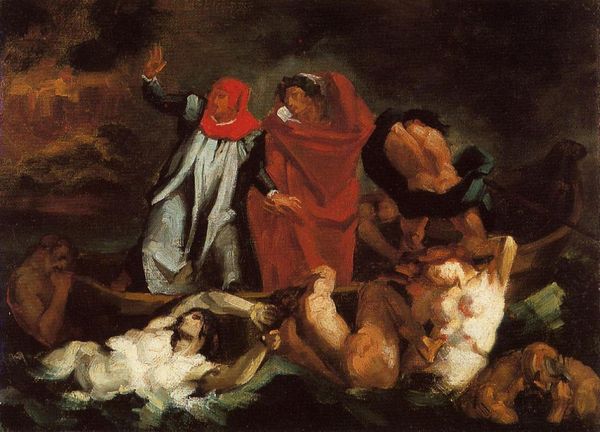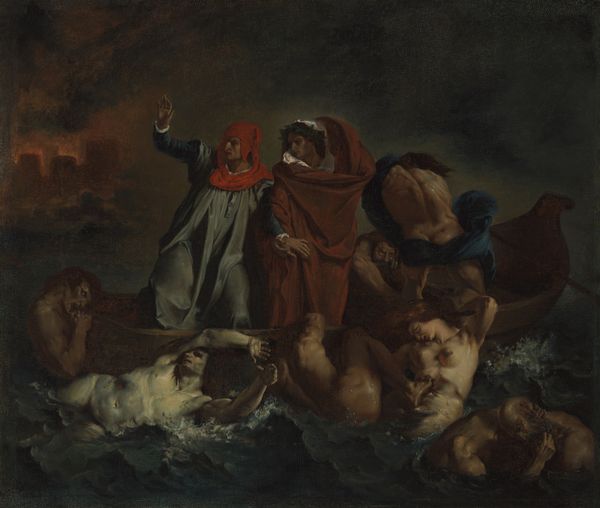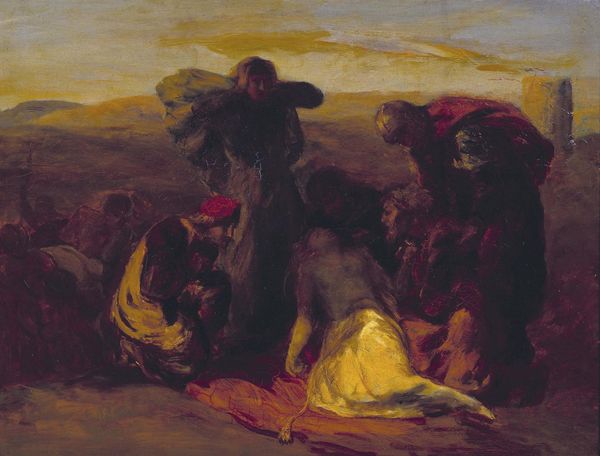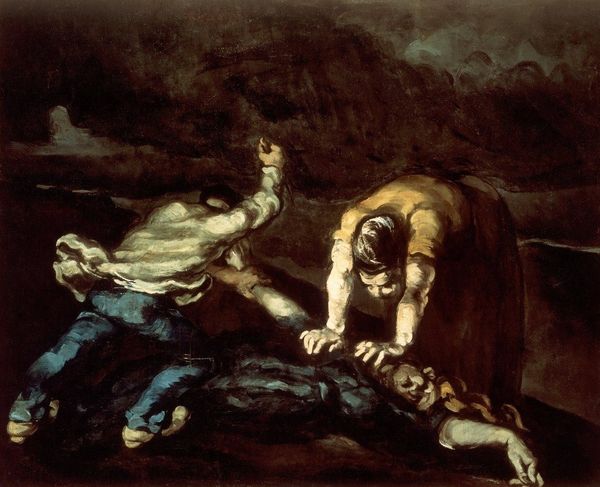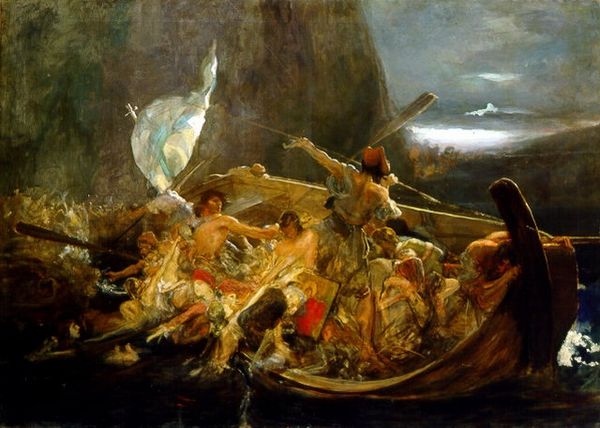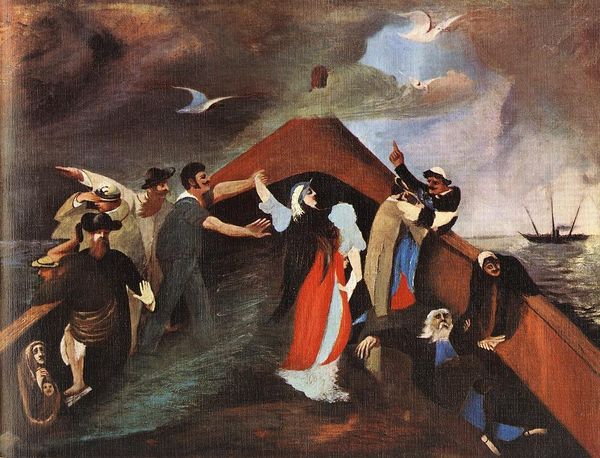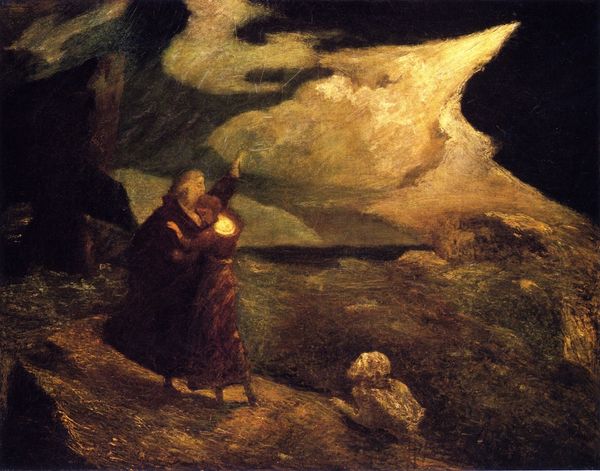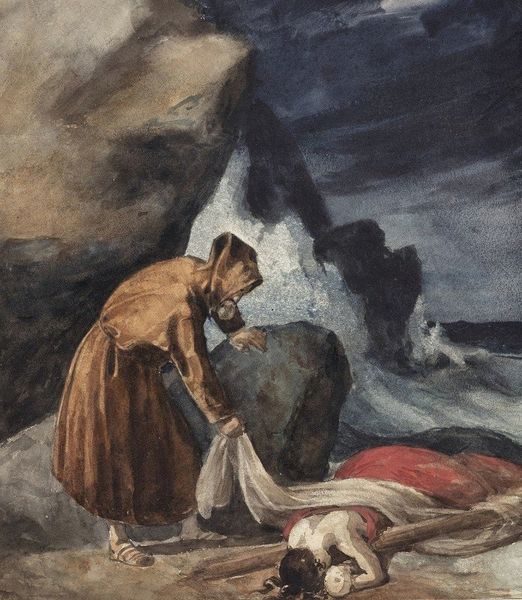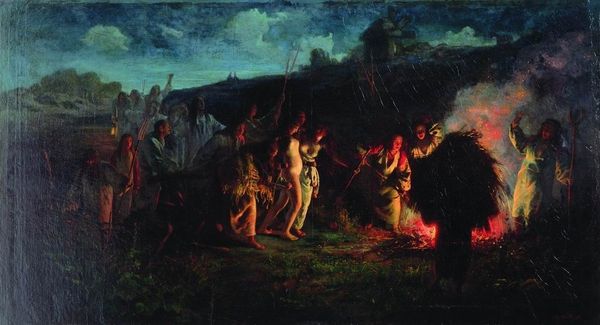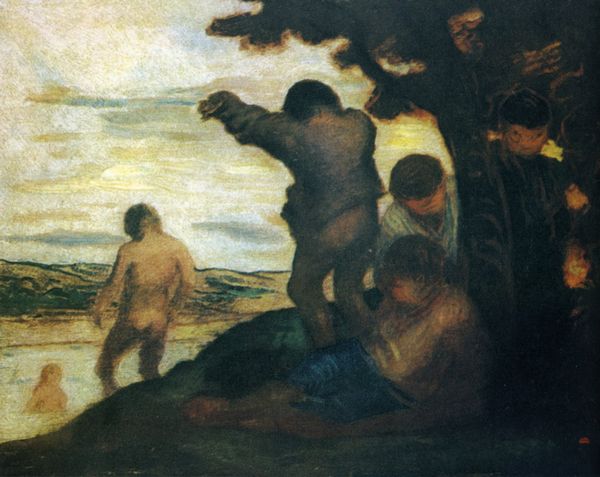
Dimensions: 38.1 x 45.7 cm
Copyright: Public domain
Editor: This is Édouard Manet’s “The Barque of Dante,” a painting from 1854 rendered in oil. I’m immediately struck by how turbulent and dark it feels. What do you see in this piece, in terms of its imagery and symbolism? Curator: Beyond the immediately evident suffering and turmoil, the cultural memory associated with Dante's Inferno is strongly at play. The barque itself is a potent symbol, echoing ancient myths of transporting souls across the river Styx. Note how Manet emphasizes the physicality, the sheer agony, of the figures. Do you observe how the use of light adds to this sense of dramatic intensity? Editor: Yes, there's a clear contrast between the highlighted bodies and the dark, undefined background. Does this have something to do with the way the piece should be interpreted? Curator: Absolutely. Light in art is often symbolic, revealing truth, knowledge, or divine presence. Here, it mercilessly illuminates the sinners, amplifying their torment and despair. And think about the psychological impact on the viewer. We are forced to confront this scene, becoming complicit witnesses to their suffering. How do you think contemporary audiences might respond to the painting’s rather harsh take on humanity? Editor: I suppose it depends on their own beliefs and their understanding of the source material. Maybe viewers with faith-based beliefs at the time would view it differently, in comparison to modern audiences? Curator: Precisely! And that changing perception reveals much about shifting cultural values and anxieties over time. Visual symbols, like the tormented figures here, speak to universal human experiences: fear, guilt, and the consequences of our choices. This painting really reminds us that some cultural anxieties transcend time. Editor: I see what you mean. This conversation has encouraged me to really reflect on the work and research its sources! Curator: Indeed! Analyzing the imagery and cultural baggage carried in an artwork reveals something about the past, the present, and our deepest selves.
Comments
No comments
Be the first to comment and join the conversation on the ultimate creative platform.
